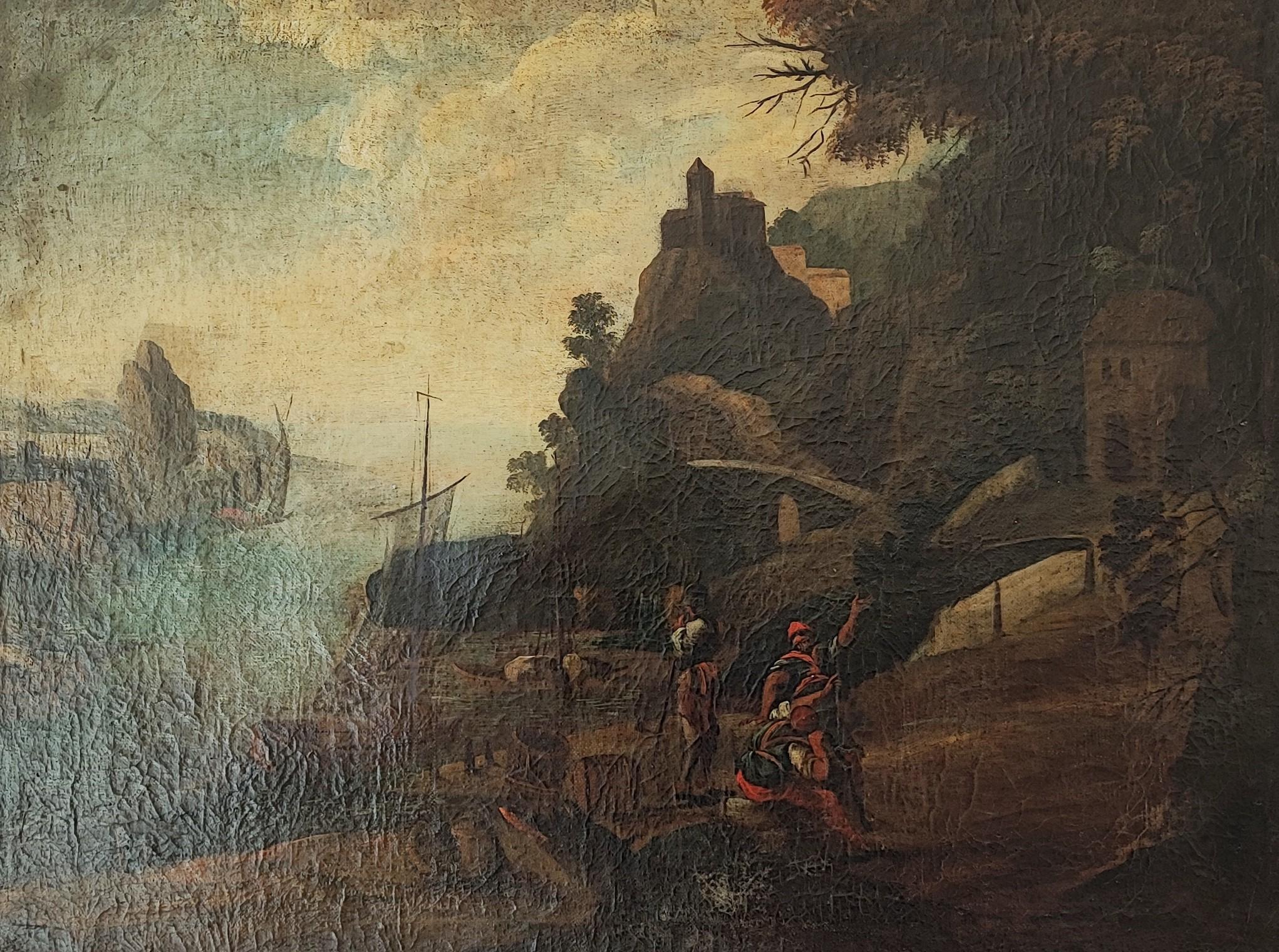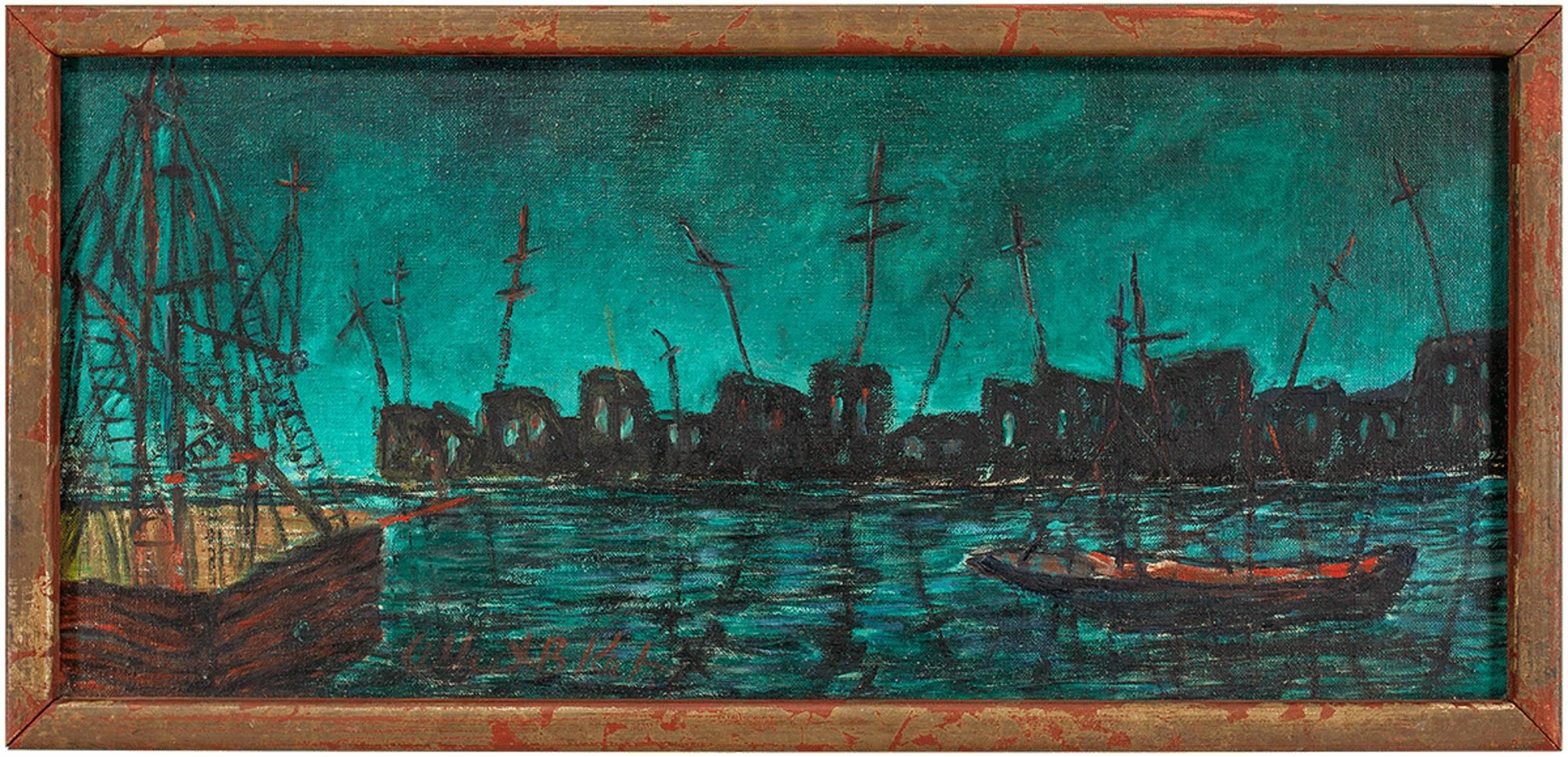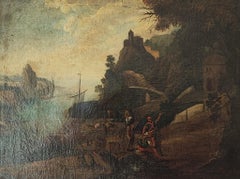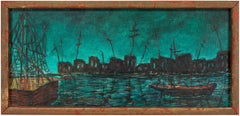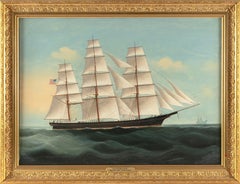Want more images or videos?
Request additional images or videos from the seller
1 of 6
UnknownShipbuilding in Philadelphia
$4,000
£3,114.27
€3,541.82
CA$5,755.04
A$6,321.66
CHF 3,303.74
MX$75,391.06
NOK 41,834.28
SEK 38,972.16
DKK 26,466.14
About the Item
Shipbuilding in Philadelphia.
Signed lower right.
- Dimensions:Height: 11 in (27.94 cm)Width: 13 in (33.02 cm)
- Medium:
- Period:
- Condition:
- Gallery Location:Fort Washington, PA
- Reference Number:Seller: 2471stDibs: LU38431084913
About the Seller
5.0
Recognized Seller
These prestigious sellers are industry leaders and represent the highest echelon for item quality and design.
Established in 1995
1stDibs seller since 2016
140 sales on 1stDibs
Typical response time: 1 hour
- ShippingRetrieving quote...Shipping from: Fort Washington, PA
- Return Policy
More From This Seller
View AllChestnut Street's New Theatre
Located in Fort Washington, PA
Signed lower right.
James R. Bingham was born in Pittsburgh, Pennsylvania and studied at the Carnegie Institute of Technology. During World War II, he put in a stint animating Army Air Force films and received an appointment as a Naval officer attached to the Office of Research and Invention.
Following the war, the heroics and adventure in his life was confined to the usual subject matter of his illustrations, such as a long series of pictures for Erle Stanley Gardner’s “Perry Mason...
Category
1940s Other Art Style Paintings
Materials
Board, Gouache
Harbor Scene
By Simon Greco
Located in Fort Washington, PA
Medium: Gouache on Board
Dimensions: 12.50" x 16.00"
Signature: Signed Lower Right
Category
20th Century Landscape Paintings
Materials
Gouache, Board
$4,500
First Bank in Philadelphia
Located in Fort Washington, PA
The First Bank in Philadelphia.
Signed lower right.
Category
20th Century Other Art Style Paintings
Materials
Board, Gouache
Pirates Boarding Ship
By Edmund Ward
Located in Fort Washington, PA
Pirates Boarding Ship
Signed lower left.
Making his first illustrations for the "Saturday Evening Post" before he was age 20, Edmund Ward ha...
Category
20th Century Other Art Style Paintings
Materials
Canvas, Oil
Riverboat Scene
By Arthur De Kuh
Located in Fort Washington, PA
Date: 1940s
Medium: Acrylic on Board
Dimensions: 21.5" x 15.5"
Signature: Signed Lower Right
Likely an illustration from a Ballantine Books publication.
21.5 x 15.25 inches (image...
Category
1940s Landscape Paintings
Materials
Acrylic, Board
Ships in Harbor
By Carlton Theodore Chapman
Located in Fort Washington, PA
Signature: Signed Lower Right
Category
20th Century Landscape Paintings
Materials
Canvas, Oil
You May Also Like
Animated harbor scene
Located in Genève, GE
Work on canvas
Black wooden frame
71 x 91 x 3 cm
Category
Late 18th Century Old Masters Landscape Paintings
Materials
Oil
$3,489
Sailing Ships
Located in Surfside, FL
Maritime Impressionist painting in somber night sky colors.
Category
Mid-20th Century Modern Landscape Paintings
Materials
Canvas, Oil
$650
"The Clipper Ship Reporter"
Located in Jacksonville, FL
Attributed to Hin Qua (Chinese, 19th Century)
Signed in pencil to the verso
Marine Arts Company attribution label to verso
Stamp referring to restoration treatment by Gustav D. Kli...
Category
19th Century Landscape Paintings
Materials
Canvas, Oil
Harbor Scene
Located in Costa Mesa, CA
This highly detailed harbor scene features many ships of various types, something British Royal Naval officer and artist Commander Charles Lodder would have seen in his everyday life...
Category
1870s Other Art Style Paintings
Materials
Paper, Watercolor
Continental School 20th Century Oil - City Mooring
Located in Corsham, GB
This atmospheric and expressive painting captures weathered boats moored against a backdrop of historic apartment buildings. Presented in a painted wooden frame. Indistinctly initial...
Category
20th Century Landscape Paintings
Materials
Oil
Urban Canal
Located in Houston, TX
Mid-century French gouache painting of urban canal scene by artist Boeme, signed lower right.
Original artwork on paper displayed on a white mat with a gold border. Archival plastic...
Category
1950s Landscape Paintings
Materials
Gouache
$1,200
More Ways To Browse
Philadelphia Painting
Mark Rothko
Antique American Painting
American Midcentury Painting
South Korea
Pink Oil Painting
Musee Des Arts
Mid Century Modern Painting 1950s
Still Life European Oil Painting
View Art Painting
Winter Landscapes
Polish Artist
Trees Contemporary Art
Boat Painting
Unknown Mid Century Modern Painting
Painting Of A Woman
Canvas Flowers Paintings
20th Century Art From Mexico
